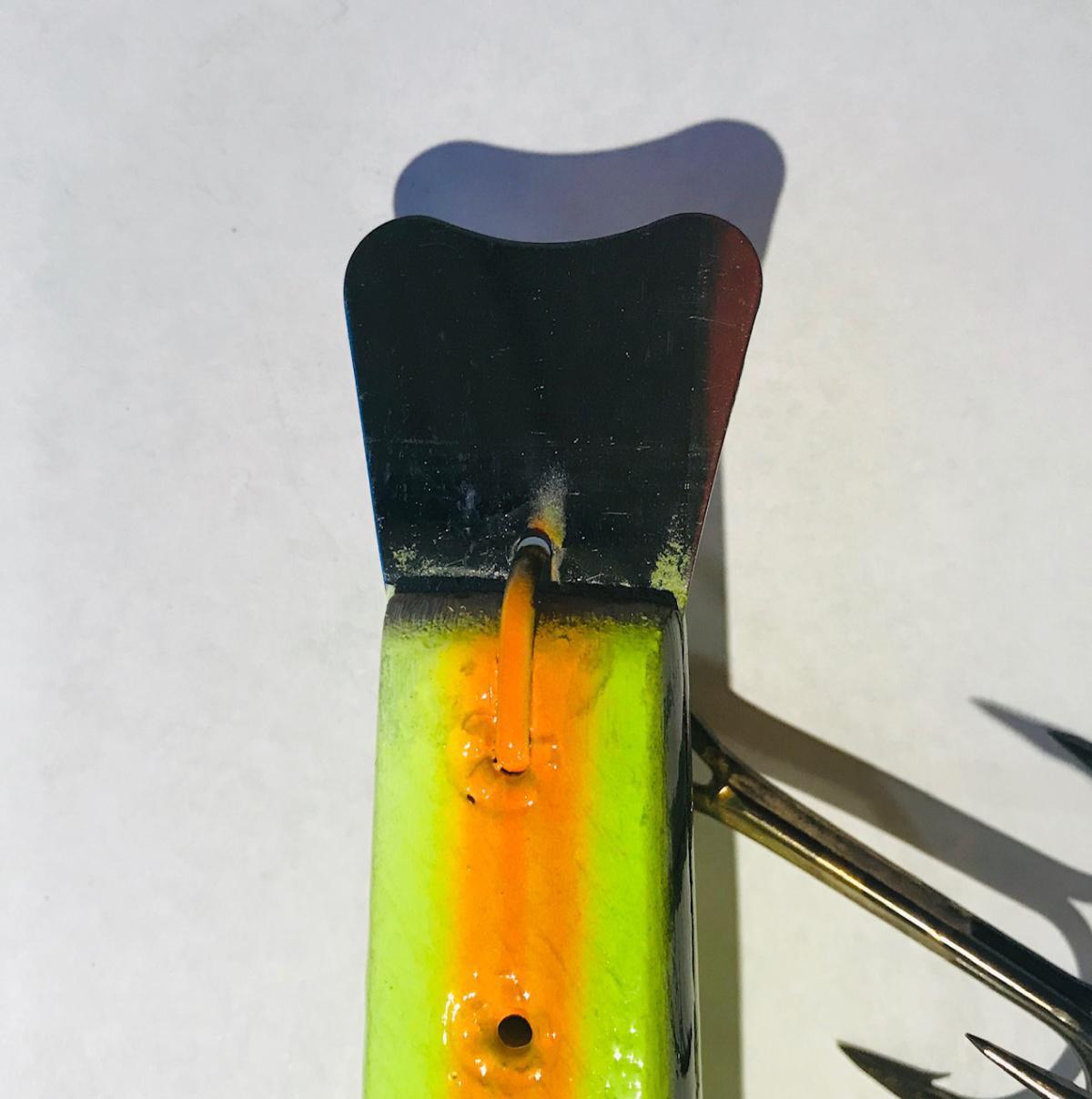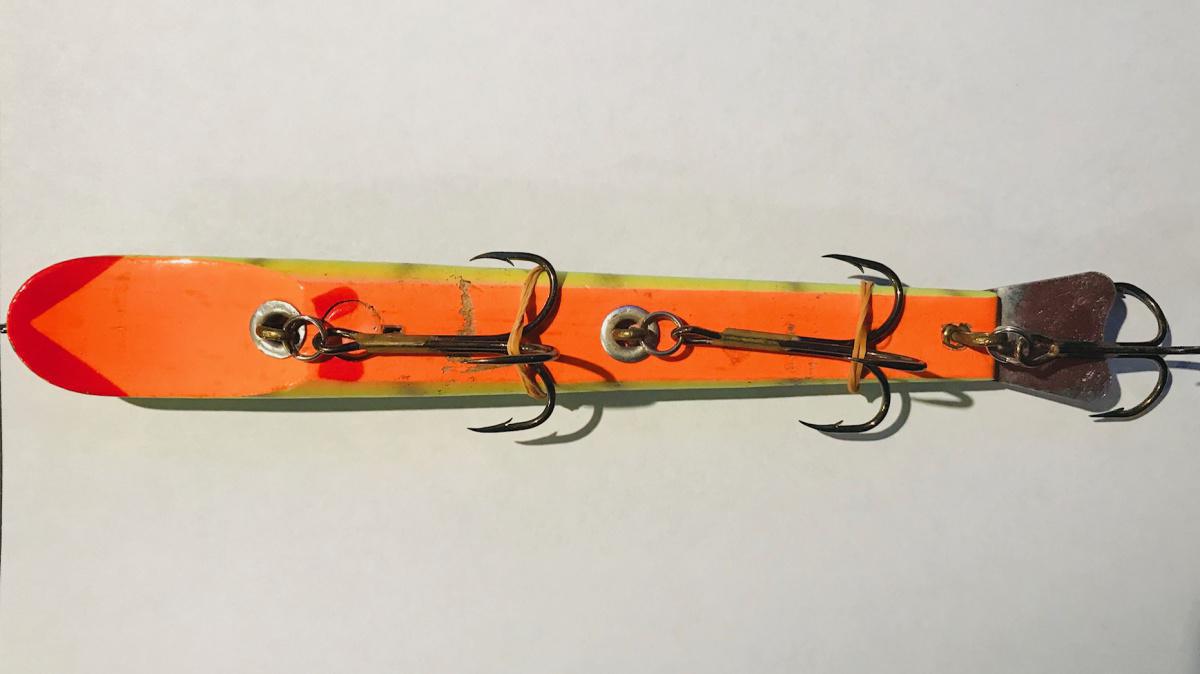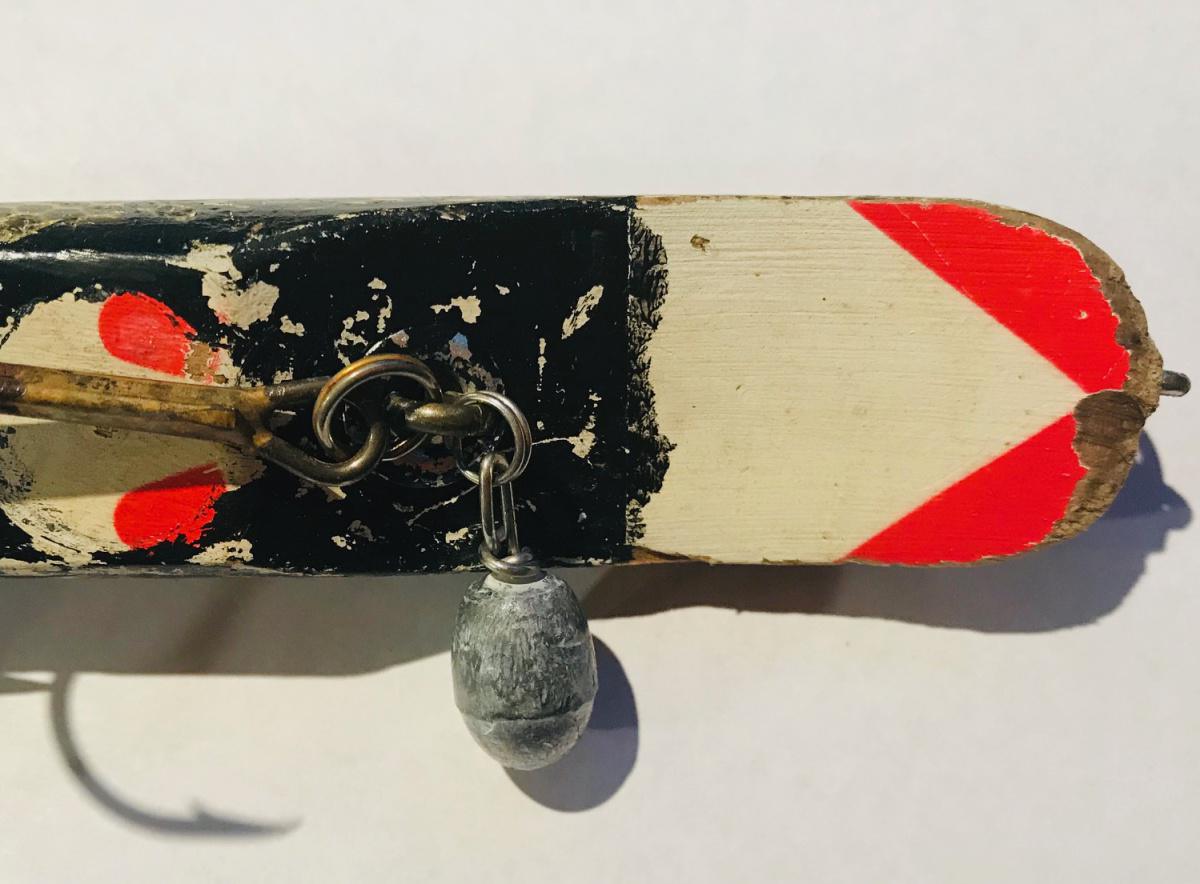Suick Thrillers where originally designed by Frank Suick in the 1930's and mostly consist of a slab of cedar with treble hooks and metal tail. Their simple, antiquated design makes for an underwhelming appearance compared to many of the latest and greatest musky lures available. With so many phenomenal muskie lures on the market, that old flat hunk of cedar and hooks just doesn't seem very cool.
While Suicks may not be the "it" lure for the modern musky hunter, their erratic darting, diving, and wobbling rise are still just as popular with hungry muskies. Some of the largest muskies that I've had the privilege of encountering have fallen for the simple ol' Suick. Ask anyone else that has spent a few decades fishing the Canadian Shield Lakes and they will forever sing the praises of these wooden sticks with hooks.
So with the effectiveness of Suick Thrillers no longer up for debate, why don't more anglers put them to use? It likely boils down to the difficulty encountered when attempting to tune these vintage baits and a general lack of understanding on when to use them. Unlike newer muskie lures, Suicks are not a simple cast a retrieve, directly out the package kind of lure. So lets look at what it takes to get dialed in with these classics and start putting more muskies in your net.
Getting in Tune
The mechanics of a Suick are simple in theory, but these lures take a little patience and practice to get dialed in. The metal tail of a Suick is made to control the diving depth when pulled through the water. This tail can be bent by hand or with pliers to reach different depths as desired. Tuning the tail of these baits can be tricky at times due to the naturally occurring variances in buoyancy of individual cedar planks. So simply put each individual Suick needs time and attention as the tiny adjustments are not one size fits all.
Before you begin adjusting a Suick, it is important to have a target depth and action in mind.
Each adjustment made should be an attempt to address a set of specific conditions, depths or desired action. This is where most anglers seem to "Loose The Thread" as Suicks are not what I consider to be a "search and locate" lure, but are necessary for very specific target locations or patterns . Aside from making a few arbitrary casts at reefs in Canada, I rarely start out on a spot or try to find a pattern with a Suick. I would consider them to be a precision tool, enabling me to probe structure and cover while in conjunction sweeping the water column. So having a plan and presentation in mind is important before you start tweaking tails and turning screws.
Adjustments to the tail should be made in small increments; after each tweak making a short cast will allow you to observe the results and adjust more if needed. These small tweaks will allow your Suick to hit varying depths and will correct the lures angle of decent in an organized and more importantly accurate and repeatable fashion. Also turning the corners of the tail slightly downward can help the lure achieve a noticeable back and forth wobble if more belly roll is needed.
The line tie eye screw on the front of a Suick should also be adjusted to control the direction that the bait will run while being pulled. This can also be tweaked to add a few abnormalities for spicing up a presentation. If your Suick is running to far to the right , turn the screw eye to the right, if it is running to far to the left the left, turn it to the left. Again, you should make only small adjustments until the desired effect is achieved.
How to retrieve a Suick
Working a Suick properly is not all that difficult, but it may take a little practice to get things running smoothly. Rarely do I attempt to "bomb" cast these lures as they seem to preform better on a shorter leash. The first key in this presentation is keeping your rod pointed at the lure so that slack can quickly be picked up, as Suicks do not dive deeply or convey action well on slack or sloppy line. To work the lure make 1-3 foot taps, pulls, or sweeps of the rod. These pulls will drive the lure downward; and as you gather the slack line generated, the lure will rise with an erratic wobble if properly tuned. Be aware that most strikes occur during the pause or while the lure is rising after it dives. During a strike reel down to gather any slack and set extremely hard to pull the wooden lure out of the muskies teeth and firmly plant the hooks.
I also like to add a long pause after one or two sweeps but some anglers prefer a straight non stop pull retrieve which is also highly effective. Regardless of what retrieval method you choose to use, it is important to add variance, being sure to not get into a steady and predictable rhythm.
If you're new to fishing Suicks, focus a few minutes, every time you're on the water to practice retrieving them, so that you develop an understanding of their cadence. Once you have a "feel" for the way they react in the water, you can start dialing in specific presentations and unlocking their true potential. Spending time practicing your retrieves in pools or bodies of water that don't have muskies may sound like a waste of time, but it is actually an investment that will pay huge dividends.
Suick Mods : Tips and Tricks to help dial in your lures
Rubber-band Man
Anyone that has spent a day on the water with me knows that I love putting rubber bands on muskie lures. Yes it's kinda goofy but it works.....and my Suicks are no exception.
I use rubber bands to hold the front two hooks tightly against the body of the lure.
This not only tightens up the wobble and flutter of the lure by eliminating the counter pendulum effect of the hooks, but it also minimizes leader fouling. I also rely on this trick when fishing dense cover during the summer months as the hooks tend to snag less weed and wood.
I use inexpensive dental or office rubber bands, which are small and exceptionally strong.
Weight Lifting
Suicks come in weighted and unweighted versions, but adding a little weight to each of these can have some amazing results. During winter months, I add 5/8's to my already weighted 10" Suicks to make them suspend and hang right in the face of neutral muskies. Screw in weight kits are available for Suicks but I prefer sticking with the old school method of adding bell sinkers.
The addition of a split ring to the front hook hanger allows for unlimited weighting possibilities with bell sinkers. These inexpensive bell style sinkers only take a few seconds to change with some split ring pliers, making it a highly versatile and inexpensive modification. The other reason I opt for the bell sinker method is the added wobble that it gives the bait on the rise. This method adds what I call the "Dinner Bell" as the bell sinker knocks against the lure with each pull of the rod. Cedar is a a resonant tonal wood used in the construction musical instruments, so giving your Suick a smack with a bell sinker like a fevered percussionist is never a bad thing.
Flash Dance
Flash tape is a must have on my boat, and I am guilty of adding to everything.
It's a cheap way to spice up a cruddy lure or give some life to one that has had the paint chewed off. Adding some flash tape to your Suick can even be a game changer, especially if your having trouble getting your presentations down. A long strip of this metallic reflective tape along the back of your Suick will allow you to keep an eye on your lure when it's further from the boat. Also the added flash on the way up will alert you sooner that the lure is almost to the top of it's rise allowing you to be prepared for the next pull.
Nose Ring
Add a large split ring to the front line tie, it's super simple and super effective.
The addition of a large sized split ring to the line tie can help add some erratic flavor to your retrieve. The split ring will cause each pull to be slightly away from center giving some side to side action and a little bit of unpredictability. The larger the ring used the wider the variances will be.
Blade Runner
When muskies are active and on the prowl, big baits with big action are often the key to success. So taking what you already have in that tackle box and kicking things up a notch is always a great idea. An easy way to add some more thump and flash to your Suick is the addition of a blade to the tail. Simply drill a small hole in the metal tail near the rear so that a split ring can be added. Once you have the split ring in place you can easily add a swivel and a spinner blade to the lure. The addition of the blade to the tail adds a ton of thump and flash as the lure pumps through the water. This presentation excels on reefs and calls fish up that might be holding deeper and adjacent to structure. This is a great modification as it can be tweaked with different blade sizes or removed having no effect on the baits original action
When and Where Should I Be Throwing Suicks ?
The answer to this question comes with the ever present overarching disclaimer...Nothing is set in stone and everyone is just making it up as they go along.
When
I fish with Suicks year round; they excel in Tennessee over the fall and winter months but undoubtedly put a ton of fish in the boat all year. They are also an absolute must have during my yearly trip in July to Eagle lake in Ontario. So the answer is not so much of a when to throw them as pertaining to time of the year but more so a "situational when."
My focus on Suicks comes when fish are slightly deeper in or holding tight to cover and are not responding to blades, rubber, or typical assortment of muskie offerings. I don't think of them as a lure for negative or neutral fish in the same sense that I would use a glide bait, but more so as a way to get moderately active fish moving in a more aggressive fashion.
So if you are not dialed in on or aware of the current muskie pattern, a Suick probably shouldn't be the first bait out of the box. If however fish are coming in lazy or breaking off long before they get into the eight, a well presented Suick can yield amazing results. I also rely on Suick Thriller as one of my main throw back baits for fish that where missed or refused to commit.
Where
There is really no bad place to utilize these lures but for my purposes they are most productive in and around cover and structure of 12 feet or less.
Suicks are excellent tools for probing weed beds both shallow and deep and can be used to knock the tops of weeds calling predators upwards. Tuned and worked in an aggressive manner, Suicks can plunge headfirst through even the densest weed growth.
Timber abounds here in the south and casting a Suick into dead falls, lay downs, and stumps can be deadly. I like to work the lure dangerously close to limbs and logs. The lure will not snag if your pulls and pauses are timed just right, allowing the Suick weave through the forest of limbs.
The flip side of this coin is intentionally bumping the sides and tops of stumps which can also trigger strikes.
It is no secret that reef muskies especially the ones of the Canadian variety love dive and rise baits. Reefs are the perfect place to bang, bash and crash your Suick seemingly reckless abandon. Making contact with the reef will send the lure bounding off it's surface in a random direction adding it's wounded appeal in the water.
I also have success fishing steep breaklines and structure with weighted Suicks during the colder months of the year. If properly weighted and balanced, the lure will hang flat perfectly suspended. The smallest twitch will send the lure in an unpredictable direction then come quickly to rest again.
Anyone that calls them self a musky fisherman should at least have a couple of these timeless classics in their arsenal and spend the time getting them tuned up and dialed in. With a little practice, time and patience, Suicks will help you put more Muskies in the net from North to South.
Steven Paul









